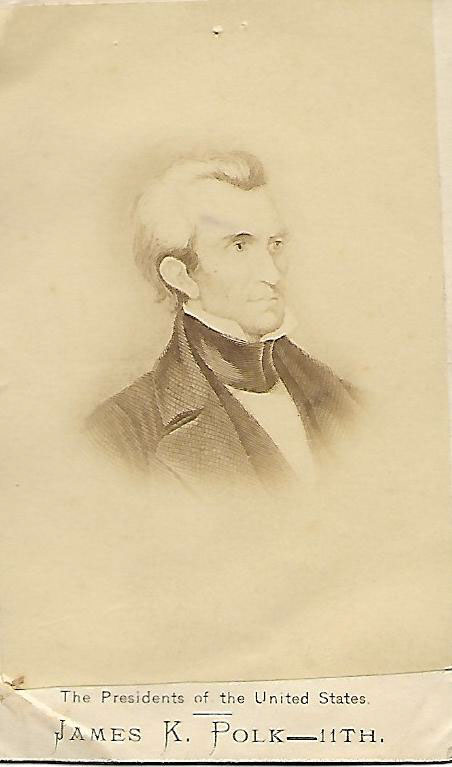Section #10 - A Manifest Destiny craze results in the Texas Annexation and a victorious war with Mexico
Chapter 132: Polk Gets The Independent Treasury He Wants
1800 – 1845
Controversy Over A Federal Bank Continues

With the Mexican War essentially won and the Wilmot Proviso threat apparently contained, Polk returns to his search for a satisfactory federal money management plan for the nation.
Going all the way back to Jefferson, Democrats distrust the notion of a privately run bank corporation having control over the government’s money and, in turn, the future direction of the economy. From their perspective, this puts too much power in the hands of un-elected officials, offers too many temptations to put selfish interests above the public good, and lacks the transparency needed to avoid corruption.
Polk’s mentor, Andrew Jackson, launches a personal crusade against the Second Bank of the United States which he calls “the monster on Chestnut Street.” In 1834 he discovers that rampant speculation by banks has driven up land prices for western settlers and undermined the true value of all soft money. In response he abruptly shuts down the BUS, provoking the financial panic of 1837.
At that time, Thomas Hart Benton, offers an option to the BUS which he calls the National Exchequer Bank. It would still handle all revenue deposits and sell insurance backing independent transactions, but have nothing whatsoever to do with impacting the course of the economy. Jackson likes this option, but Congress refuses to go along.
After the crash of 1837, Van Buren proposes an Independent Treasury, run by government officials and not private investors. It would receive tax payments in hard money, and operate within a narrow charter – depositing federal revenue, disbursing funds to cover federal spending, and making loans to demonstrably solvent state banks.
Van Buren finally gets congressional approval in 1840, at the end of his term. Jackson applauds the move as does his hard money advisor, William Gough, who cites the utter simplicity of the solution:
So plain would be the accounts that we might choose for the chief bookkeeper…a cordwainer (shoemaker)…who daily threw into the leg of one boot his receipts for the day, and into another…his expenditures.
But the Independent Treasury stands for only one year before Henry Clay and his Whigs repeal the bill – hoping to establish a Third U.S. Bank, to keep more credit in the marketplace, and to back their spending on infrastructure.
When Tyler vetoes this effort, all federal revenues are deposited directly into state banks.
August 6, 1848
An Independent Treasury Is Established With Help From Benton
In 1846 the need to fund the Mexican War forces Polk’s hand on the banking system.
He has begun as a strict Jacksonian, inclined to hard money and suspicious of all private banks and bankers. But he grudgingly comes around to seeing the need for banknotes to support daily commerce and for a public agency to handle the government’s cash flow and insure the value of the currency.
He decides that Van Buren’s Independent Treasury is the best path to meeting these goals – and supports a bill to re-instate it, along with a clause giving Secretary Walker the power to issue short-term notes (bonds) to bolster cash-on-hand, as needed.
The Independent Treasury Act passes Congress on July 29, 1846, with vote cast along straight party lines.
“Old Bullions” Benton applauds it as the final divorce between the State and the Banks.
Henceforth decisions about spending federal money would rest with elected officials and not private corporations.